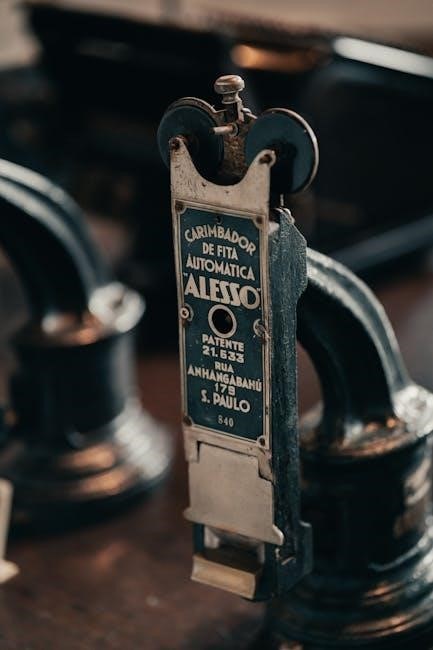PetSafe automatic feeder provides convenient and reliable feeding solutions.
Overview of PetSafe Automatic Feeder User Manual
The PetSafe Automatic Feeder User Manual is a comprehensive guide that provides users with detailed instructions on how to operate and maintain their pet feeder. The manual covers various topics‚ including installation‚ programming‚ and troubleshooting. It is designed to help users get the most out of their feeder and ensure that their pets are fed consistently and reliably. The manual is available in multiple formats‚ including PDF and print‚ and can be accessed online or through the manufacturer’s website. By following the instructions outlined in the manual‚ users can easily and quickly set up and use their feeder‚ and enjoy the benefits of convenient and stress-free pet feeding. The manual is an essential resource for anyone who owns a PetSafe automatic feeder and wants to get the most out of their investment. With its clear and concise instructions‚ the manual makes it easy for users to use their feeder with confidence.

Key Features of PetSafe Automatic Feeder
Offers customizable feeding options with programmable settings and voice recorder.
5-Button Navigation and Control Panel
The PetSafe automatic feeder features a user-friendly 5-button navigation and control panel‚ allowing pet owners to easily program and customize their pet’s feeding schedule. The control panel includes an up arrow key‚ down arrow key‚ left arrow key‚ right arrow key‚ and enter/select key. These buttons enable users to navigate the LCD screen and access various settings‚ such as meal size and frequency. With the 5-button navigation‚ users can quickly and easily set up their pet’s feeding schedule‚ ensuring their pet receives the right amount of food at the right time. The control panel is designed to be intuitive‚ making it easy for pet owners to use and manage their pet’s feeding schedule. By using the 5-button navigation and control panel‚ pet owners can provide their pet with a consistent and reliable feeding schedule.

Setting Up the Feeder
Place the bowl into the bowl holder to begin setup process.
Battery Compartment and Powering the Feeder
The battery compartment is located on the bottom of the feeder hopper base. It holds 4 D-cell alkaline batteries‚ which provide power to the feeder. To insert the batteries‚ simply open the compartment and place the batteries inside. Make sure to align the batteries correctly and close the compartment securely. The feeder will then be powered and ready for use. It is important to note that the batteries should be replaced periodically to ensure the feeder continues to function properly. The feeder will also indicate when the batteries are low‚ reminding you to replace them. By following these simple steps‚ you can ensure your feeder is always powered and ready to provide for your pet’s needs. The battery compartment is a convenient and reliable way to power your feeder.

Programming the Feeder
Use the control panel to easily program feeder settings and schedules.
Understanding the 24-Hour Format and Meal Size Settings
The 24-hour format allows you to schedule meals at specific times of the day. To set the meal times‚ use the control panel to navigate through the menu options. The meal size settings enable you to customize the amount of food dispensed for each meal. You can choose from a range of portion sizes to suit your pet’s needs. It is essential to understand the meal size settings to ensure your pet receives the right amount of food. The user manual provides detailed instructions on how to set the meal times and sizes. By following the guidelines‚ you can easily program the feeder to meet your pet’s feeding requirements. The 24-hour format and meal size settings work together to provide a convenient and reliable feeding solution for your pet.

Troubleshooting and Maintenance
Regular maintenance and troubleshooting ensure feeder reliability always.
Common Issues and Solutions for PetSafe Automatic Feeder
The PetSafe automatic feeder can sometimes experience issues that affect its performance. One common problem is the feeder’s failure to dispense food‚ which can be caused by a blockage in the food hopper or a malfunctioning motor. To resolve this issue‚ users can try cleaning the hopper and checking the motor for any signs of damage. Another common issue is the feeder’s inability to connect to the Wi-Fi network‚ which can be caused by a weak signal or incorrect password. Users can try restarting the feeder and checking their network settings to resolve this issue. By following these troubleshooting steps‚ users can quickly identify and resolve common issues with their PetSafe automatic feeder‚!
